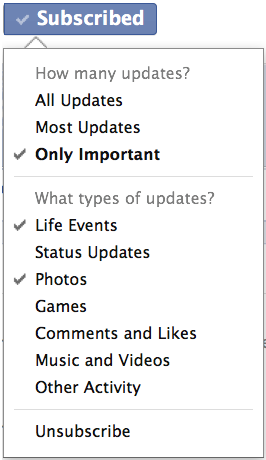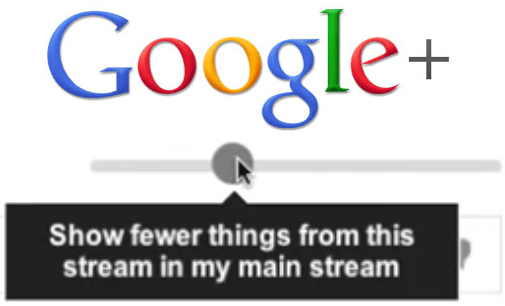Google+ has found its place in the social network ecosystem: Twitter is the interest network, Facebook is the social network, Path is the micronetwork, and now Google+ is the macronetwork. With the new Circles volume slider, you categorize people and then adjust the presence of those entire sets of people in your main stream. This lets you efficiently consume updates from across relationship types in whatever balance you choose through a single feed. No other service offers this way to maximize content stream relevancy.
Without the Circles volume slider, the macronetwork model didn’t work. Managing relationships individually was tedious at that scale, and Google didn’t know which Circles you wanted to see most of. This allowed noisy acquaintances or public figures to drown out quieter close friends, making it difficult to consume their content in the same stream.
With the addition of the Circles volume slider, here’s how I see the differentiation between the 4 main social network models shaking out:
- Twitter – Specializes in connections with strangers who share your interests, you follow or you don’t, and there’s no volume control
- Path – Specializes in connections with your closest friends, you add someone as a friend or you don’t, there’s no volume control
- Facebook – Specializes in connections with people you’ve met, and for each individual connection you select what type and volume of content you see
- Google+ – Supports a diverse array of relationship types, you Circle connections with similar types together, and you select the volume of entire sets of individuals
 Previously, Google+ didn’t enable the macronetwork model any better than Facebook. Both provided dedicated streams for Circles or friend lists, and Facebook offered volume control at the individual level. But this individual-centered approach doesn’t scale to having many thousands of connections.
Previously, Google+ didn’t enable the macronetwork model any better than Facebook. Both provided dedicated streams for Circles or friend lists, and Facebook offered volume control at the individual level. But this individual-centered approach doesn’t scale to having many thousands of connections.
Through its Subscribe feature, Facebook is trying to snatch Twitter’s crown and encroach on Google+’s runway in the interest network space. However, it’s too deeply entrenched around the individual after years of binary friendship to reorganize curation around friend lists. This creates an opportunity for Google+ to own mass curation.
Rather than worrying about who to friend or follow and who not to, Google+ lets you add hundreds or thousands of people to a Circle, but then opt to only see a low volume of that Circle’s content. Google’s algorithms can then surface only the best content from that Circle. I could effectively subscribe to all the experts on certain topic that I’m mildly interested in, but only hear about the most important developments in that area.
There’s no way to do this on Twitter, and on Facebook it would take too much work. Everyone might not need such capabilities today, but some do and more will with time.
Some believe in the “niche to win” model. Really, it’s about differentiating and being the best at what you do. Google could make curation of the widest variety of signals its “niche”. The content stream business is about sorting out the most relevant content. It will need to get users sharing more, but with the Circle volume slider, Google+ has created the biggest sieve.
